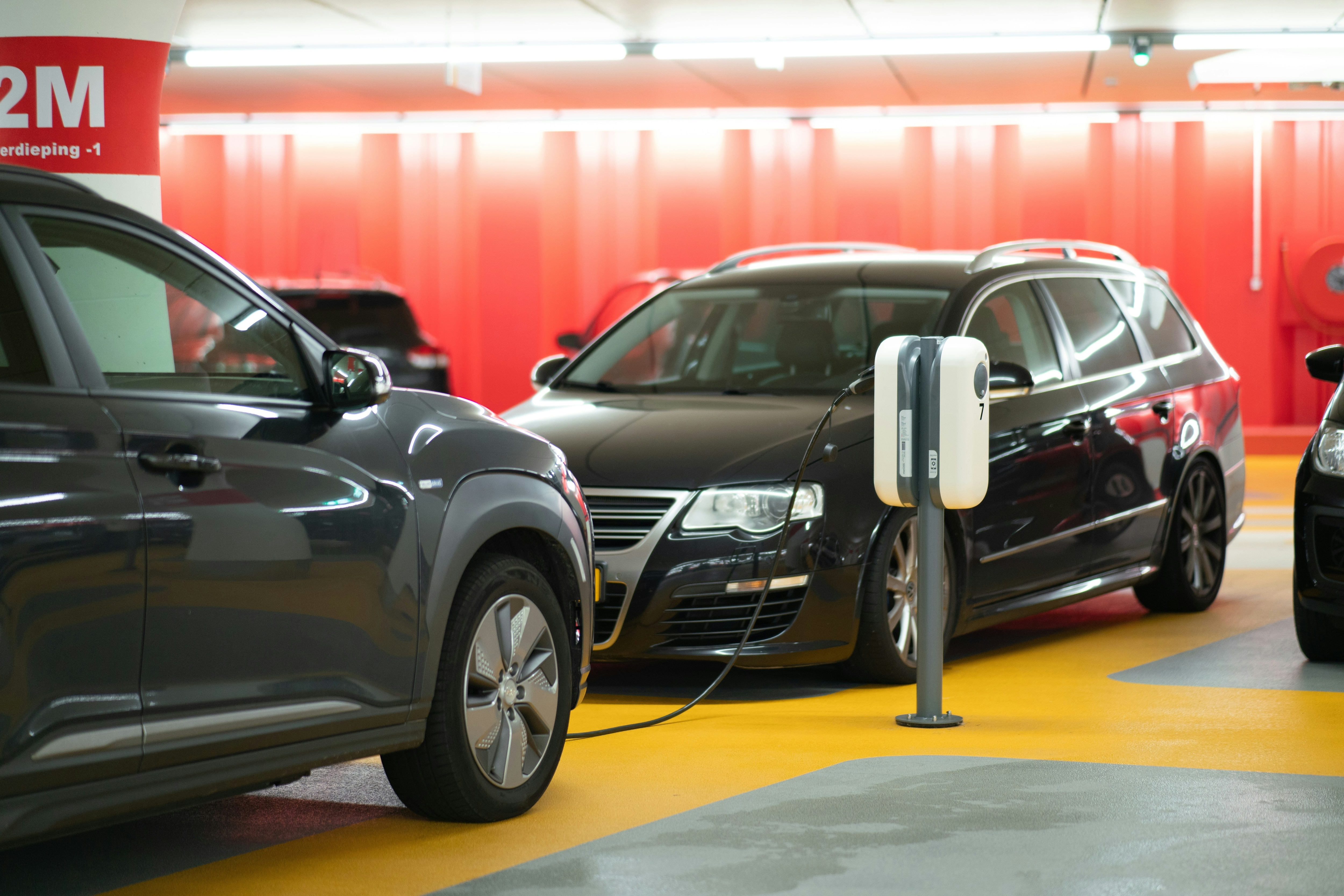Paris Agreement: What are NDCs and why do they matter?

Countries have to update their Nationally Determined Contributions by February 2025 – some announced their targets at COP29. Image: Unsplash/Tyler Casey
This article has been updated.
- Most countries have missed a deadline to update their Nationally Determined Contributions (NDCs) by 10 February under the terms of the Paris Agreement.
- Do the current NDCs go far enough to limit the global temperature increase to 1.5°C above pre-industrial levels?
- Scaling Carbon Dioxide Removal technologies will be critical to meet net-zero targets, according to the World Economic Forum’s Carbon Dioxide Removal: Best-Practice Guidelines white paper.
When climate change experts and leaders gather in Brazil this November, for COP30 – the 30th Conference of the Parties to the United Nations Framework Convention on Climate Change (UNFCCC) – it will mark a decade since the Paris Agreement was adopted at COP21 in December 2015.
At least nine months before the COP, due to take place in Belém from 10 to 21 November, countries were due to submit updated national targets to reduce greenhouse gas emissions – the core of the Paris Accord.
But most countries signed to the historic agreement, including some of the world's biggest polluters, have missed the United Nations deadline to set out their plans to cut emissions by 2035. And President Donald Trump has ordered the US, the world's second-biggest emitting country, to pull out of the Paris Agreement altogether.
Known as Nationally Determined Contributions (NDCs), these commitments form the backbone of global efforts to combat climate change. Some countries, including the UK, announced their new targets at COP29, in November 2024.
Just what are NDCs and why are they so important?
NDCs and the ‘ratchet mechanism’ of updates
NDCs are at the heart of the Paris Agreement, which was adopted at COP21 in 2015. Parties agreed to keep global warming well below 2°C above pre-industrial levels, as well as actively pursue efforts to “limit the temperature increase to 1.5°C above pre-industrial levels”.
The Paris Agreement is legally binding and works in a five-year cycle of increasingly ambitious commitments to climate action.
This approach has been dubbed "the ratchet mechanism" as countries gradually ‘ratchet up’ their plans to reach the target of net zero by 2050.
NDCs include each country's pledge to reduce GHG emissions, with specific targets, as well as measures countries are taking to adapt to climate change, alongside implementation strategies and timeframes to achieve these goals.
As the name suggests, they are unique to each nation, reflecting their specific circumstances, capabilities and priorities in the fight against climate change.
The first NDCs were part of the Paris Agreement agreed by all 196 Parties. The first update was in 2020, and the deadline to update these commitments again was February 2025. The target is to achieve them by 2035.
Which countries have set NDCs and why do they matter?
Several countries announced the second update to their NDCs in November at COP29, ahead of the February deadline, with the UK setting the most ambitious target.
- UK: The UK Prime Minister Sir Keir Starmer delivered a speech in Baku on 12 November, in which he announced the country’s 2035 NDC would reduce all GHG emissions by at least 81% on 1990 levels, aligned with 1.5°C.
He said: "We urge all parties to come forward with ambitious targets of their own, as we all agreed at the last COP. We will work in partnership to support other countries to develop their own commitments and transition through our forthcoming Global Clean Power Alliance."
- Brazil: Due to host COP30 in November, Brazil also announced its 2035 NDC at COP29: to reduce emissions by up to 67% by 2035, compared to 2005.
The country's Vice President, Geraldo Alckmin said: "It is certainly ambitious but also feasible. To achieve this, however, we will need to work together to ensure the appropriate conditions and means of implementation."
He added: "Our NDC is much more than just an emissions reduction target for 2035: it reflects the vision of a country that is looking to the future and determined to be a protagonist in the new global economy, with renewable energy, combating inequality, and alongside a commitment to sustainable development."
- UAE: Host of COP28 in 2023, the United Arab Emirates also announced its 2035 NDC at COP29 – a target of reducing emissions by 47% by 2035 compared to the 2019 baseline.
On 21 November, at a joint press conference on NDCs, convened by European Commissioner for Climate Action, Wopke Hoekstra, as well as representatives from Canada, Norway, Mexico, Switzerland, Chile, Georgia and the EU, committed to setting NDCs that were ...
- Consistent with the IPCC emissions trajectories and the global stocktake call for deep, rapid and sustained reductions in greenhouse gas emissions in line with 1.5°C.
- Absolute, economy-wide reduction targets covering all greenhouse gases, sectors, and categories.
- Aligned with steep and credible emissions reductions towards their respective mid-century net zero goals, consistent with a linear or steeper trajectory.
- Canada: In December 2024, Canada announced a target to reduce emissions by 45% to 50% by 2035, which fell short of the 50% to 55% ambition recommended by the government-appointed Net-Zero Advisory Body.
- Japan: The same month, Japan finalized its plan to cut emissions by 60% from 2013 levels by 2035, up from its 2030 goal of a 46% cut.
- US: The Biden administration set a new US target to cut emissions by 61%-66% below 2005 levels by 2035, which officials called achievable. Just over a month later, President Trump followed through with plans to remove the US from the Paris Agreement, by issuing an executive order.
Once submitted, all NDCs are held in the NDC Registry by the UNFCCC – where you can see the previous updates – and some countries, including Chile and the UK, have enshrined their NDCs in law.
The World Resources Institute’s (WRI) Climate Watch platform has launched an interactive NDC Tracker, which will enable users to track and analyze the new submissions.
Switzerland, Uruguay, Ecuador, St Lucia and Andorra had also met the 10 February deadline to submit updated NDCs.
Serving as catalysts for national climate policies and actions, NDCs drive investments in clean energy, sustainable transportation and climate-resilient infrastructure.
NDCs also promote transparency and accountability in global climate efforts, as countries are required to regularly report on their progress.
Detailed, ambitious and credible NDCs set emissions reduction targets for key polluting sectors, such as energy and transportation, while ensuring national policies such as fossil fuel subsidies don’t stand in the way of progress.
The level of detail can include plans for creating jobs in clean technology industries and the outline of projects, policies and financing needs that can actually help to attract funding.
How is the World Economic Forum fighting the climate crisis?
Do the current NDCs go far enough to limit global warming?
Ahead of COP29 in November 2024, the UNFCC released a synthesis report of countries' NDCs. Executive Secretary Simon Stiell said the current pledges “fall miles short of what’s needed” to prevent the worst impacts of climate change.
The report found that full implementation of all latest NDCs would likely to lead to a 5.9% emission reduction by 2030 compared to the 2019 levels. But if NDCs were implemented without conditional elements, it would likely lead to 0.8% higher emissions in 2030 than in 2019.
Existing NDCs are not nearly ambitious enough to limit global warming to below 1.5°C, according to the WRI. “The actions outlined in existing NDCs are on track for a catastrophic 2.5-2.9°C of warming by 2100,” it says.
In 2023, the Intergovernmental Panel on Climate Change’s (IPCC) summary of five years of reports said that to keep within the 1.5°C limit, emissions need to be reduced by at least 43% by 2030 compared to 2019 levels and at least 60% by 2035.
In April 2024, WRI experts identified a five-point plan for the next-generation NDCs, urging governments to “go much further in their emissions cuts than their current NDCs”.
Developed countries, the world’s largest emitters historically, also had a responsibility to “make the deepest reductions while providing substantially more finance to help developing countries accelerate climate action”.
In 2023, an analysis by the United Nations Development Programme found developing and vulnerable nations are “making concrete progress on ambition”. For example, pledges from African countries are more robust than the global average, it found.
Some countries, including Germany, have signalled they intend to introduce ‘net-negative’ targets when more greenhouse gases are removed than emitted. This goes beyond net zero, which balances the two.
At COP28 in December 2023, Denmark, Finland and Panama started the Group of Negative Emitters. In July 2024, the UK’s Climate Change Committee reported that “only a third of the emissions reductions required to achieve the country’s 2030 target are currently covered by credible plans”.
How carbon removal technologies can help
While reducing carbon entering the atmosphere is the most pressing challenge, speeding up the rate at which we remove carbon is equally important to meeting the Paris targets.
The IPCC says reaching net zero alone will require a "substantial reduction in overall fossil fuel use, minimal use of unabated fossil fuels, and use of carbon capture and storage (CCS) in the remaining fossil fuel systems; energy conservation and efficiency; and greater integration across the energy system".
Innovation in CCS and Carbon Capture and Utilization is needed to rebalance CO2 levels in the atmosphere and prevent future warming.
But given the urgency, scaling ‘engineered’ Carbon Dioxide Removal technologies, including Bioenergy with Carbon Capture and Storage, Direct Air Carbon Capture and Storage and Enhanced Rock Weathering is also critical.
"Even if every country and every company achieves net zero by 2050, it won't be enough. We will need to keep removing CO2 for decades afterwards – to reverse the accumulation of historic emissions," writes Nasim Pour, Lead, Carbon Removals and Market Innovation, World Economic Forum in the Carbon Dioxide Removal: Best-Practice Guidelines white paper.
Members of the Forum’s First Movers Coalition – a group aiming to accelerate the decarbonization of hard-to-abate sectors – have committed to contracting for 50,000 tonnes or $25 million worth of durable and scalable carbon removal by 2030.
Don't miss any update on this topic
Create a free account and access your personalized content collection with our latest publications and analyses.
License and Republishing
World Economic Forum articles may be republished in accordance with the Creative Commons Attribution-NonCommercial-NoDerivatives 4.0 International Public License, and in accordance with our Terms of Use.
The views expressed in this article are those of the author alone and not the World Economic Forum.
Stay up to date:
SDG 13: Climate Action
Forum Stories newsletter
Bringing you weekly curated insights and analysis on the global issues that matter.
More on Climate Action and Waste Reduction See all
Steve Smith
December 19, 2025








